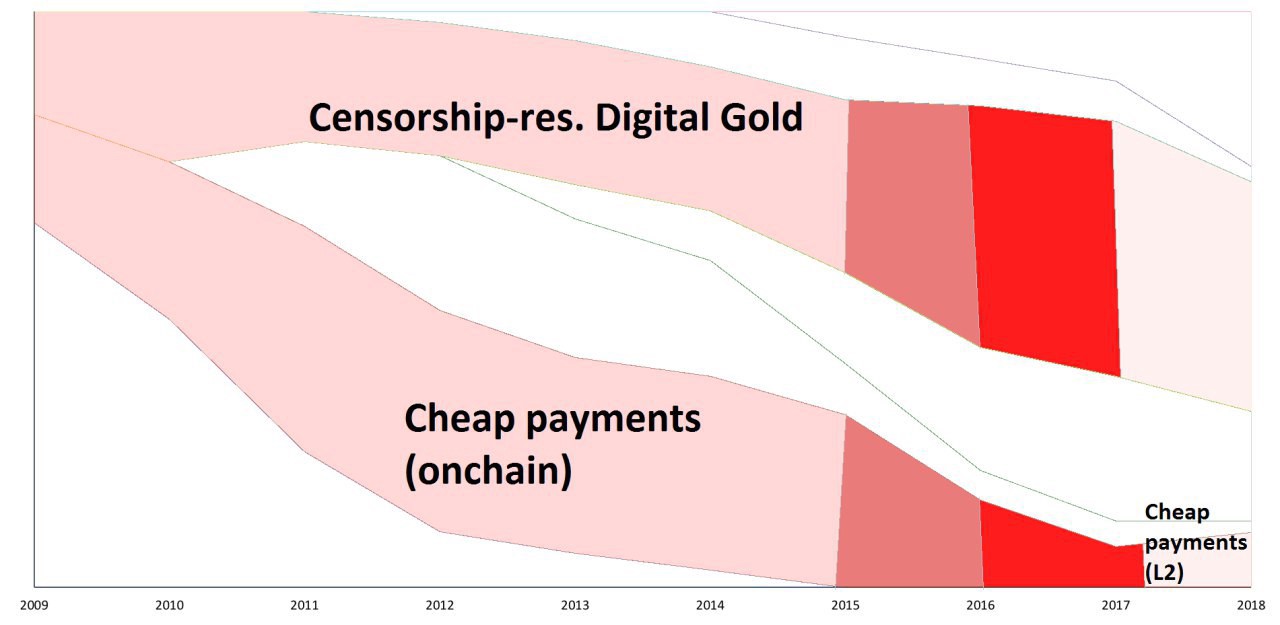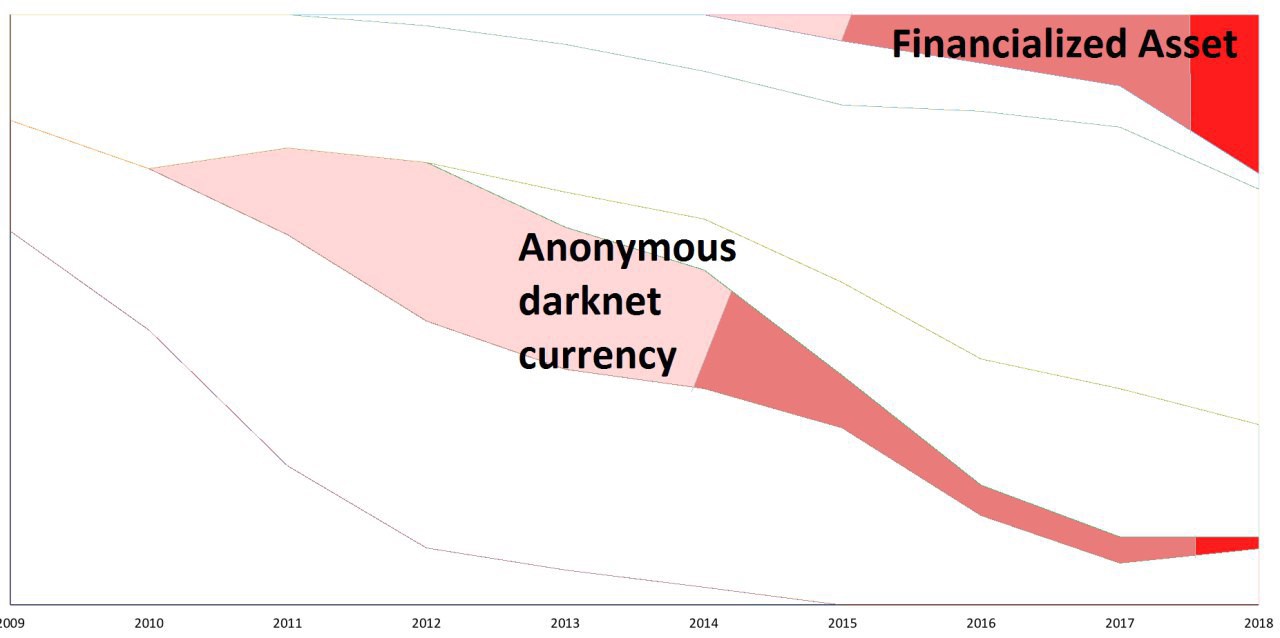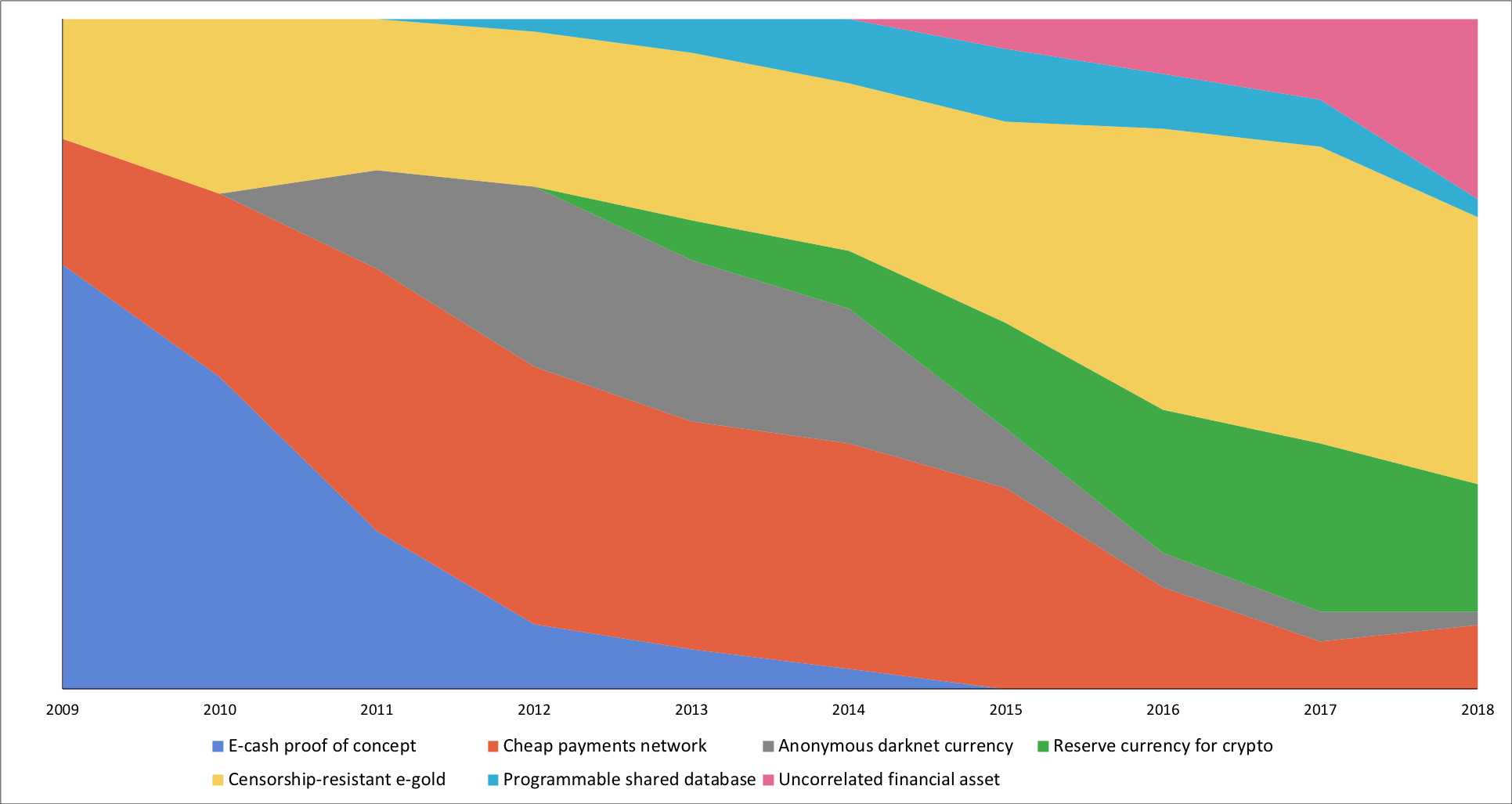
Last week Nic Carter, the partner at Castle Island Ventures and co-founder of Coinmetrics.io, published an interesting study that looks at the ever-changing narratives tied to Bitcoin technology. Carter and his fellow researcher Hasufly scraped up a lot of data stemming from Bitcointalk.org posts over the years that highlight some of the community-derived visions of what Bitcoin should be and how these visions have changed over time.
Also read: Need Cold Storage? Check Out Bitcoin.com’s Revamped Paper Wallet Generator
The Ever-Changing Bitcoin Narratives
 If you’ve been into cryptocurrencies for a long time you might have noticed the community narratives and visions for Bitcoin have changed over the years. For instance, back in the early days, Bitcoin technology was supposed to eradicate the current banking cartels and remove money from the state’s power as well. At least that’s what the early bitcoiners and cypherpunks said at the time. However, Bitcoin narratives have evolved and lots of Bitcoin proponents now want the central bank’s acceptance and think governments regulating the use of cryptocurrencies will make them a ‘legitimate’ form of tender. Moreover, some people believe Bitcoin should be a store of value much like gold, while others believe Bitcoin was meant to be a fast and cheap peer-to-peer cash system.
If you’ve been into cryptocurrencies for a long time you might have noticed the community narratives and visions for Bitcoin have changed over the years. For instance, back in the early days, Bitcoin technology was supposed to eradicate the current banking cartels and remove money from the state’s power as well. At least that’s what the early bitcoiners and cypherpunks said at the time. However, Bitcoin narratives have evolved and lots of Bitcoin proponents now want the central bank’s acceptance and think governments regulating the use of cryptocurrencies will make them a ‘legitimate’ form of tender. Moreover, some people believe Bitcoin should be a store of value much like gold, while others believe Bitcoin was meant to be a fast and cheap peer-to-peer cash system.
After researching this topic, Nic Carter published a well-documented study of the ever-changing narratives stemming from individuals and groups who like to tether their own visions to the Bitcoin protocol. Carter and his partner Hasufly used data derived from conversations taking place on the forum Bitcointalk.org over the last decade.
“Perhaps the most enduring source of conflict within the Bitcoin community derives from incompatible visions of what Bitcoin is and should become,” explains Carter’s study.
In the absence of a recognized sole leader, Bitcoiners refer to founding documents and early forum posts to attempt to decipher what Satoshi truly wanted for the currency. This is not unlike US Supreme Court justices poring over the Constitution and applying its ancient wisdom to contemporary cases.
Isolated and Incompatible Visions
Carter and Hasufly’s research breaks Bitcoin narratives down to seven sections which includes: “The e-cash proof of concept (the first major narrative), cheap p2p payments network, censorship-resistant digital gold, private and anonymous darknet currency, reserve currency for the cryptocurrency industry, programmable shared database, and an uncorrelated financial asset.” After assessing each narrative the team created a chart that shows each narrative’s popularity over time.

Moreover, Carter takes the study further by isolating certain narratives that have seem to be “entirely incompatible.” One example is the cheap P2P payments network versus the digital gold vision, which in turn caused the Bitcoin community to split in August of 2017. Further, Carter notes that the anonymous private vision of the Bitcoin protocol is very different than the transparent blockchain narrative bolstered by a lot of individuals.

“The anonymous and fungible vision of Bitcoin is somewhat at odds with the financialised, transparent version which is growing in popularity,” Carter explains.
Individuals that want exposure to Bitcoin the financial asset tend to prefer a Bitcoin which is compatible with AML/KYC and tend to put a lesser emphasis on privacy or fungibility. Many pundits believe this will be the next bitter fight for the soul of Bitcoin.
Carter’s Study Suggests That It’s Appropriate to Change and Acknowledge Different Visions in Response to New Data
The authors of the study say they are aware that the analysis relies heavily on the researcher’s own interpretation of old forum posts. Carter says they are open to an alternative metric if someone wants to suggest it to them for further analysis.
“We’re not positing our analysis as the absolute truth. Instead, we want to nudge Bitcoiners away from absolutism and acknowledge that major narratives within the Bitcoin community have changed over time — And that’s ok — it’s appropriate to change your mind in response to new data,” Carter concludes. Check out Carter’s entire analysis called “Visions of Bitcoin” here on Medium.
What do you think about the analysis of different Bitcoin visions over time? Do you think that they will continue to change or one narrative will be settled on? Let us know what you think about this subject in the comment section below.
Images via Pixabay, DC, and Nic Carter’s Medium Post “Visions of Bitcoin.”
Need to calculate your bitcoin holdings? Check our tools section.
The post Study Provides an Interesting Look at Changing Bitcoin Narratives appeared first on Bitcoin News.
Powered by WPeMatico

